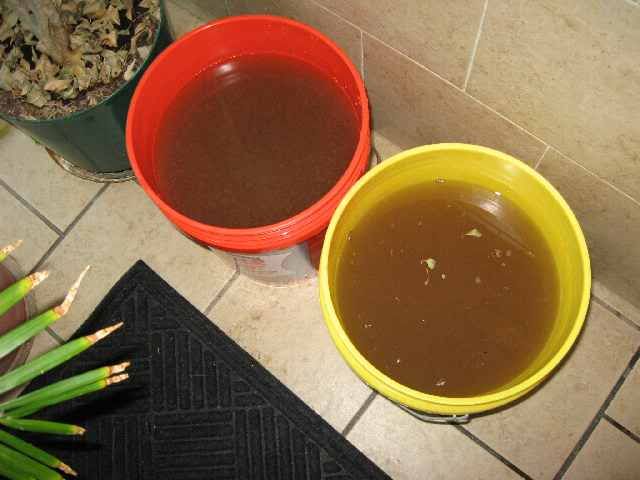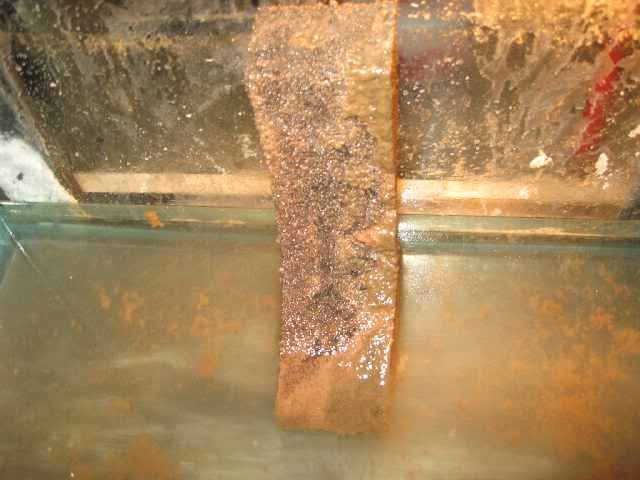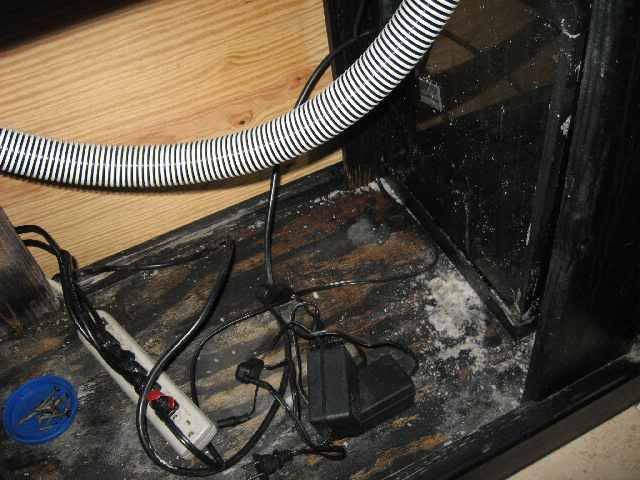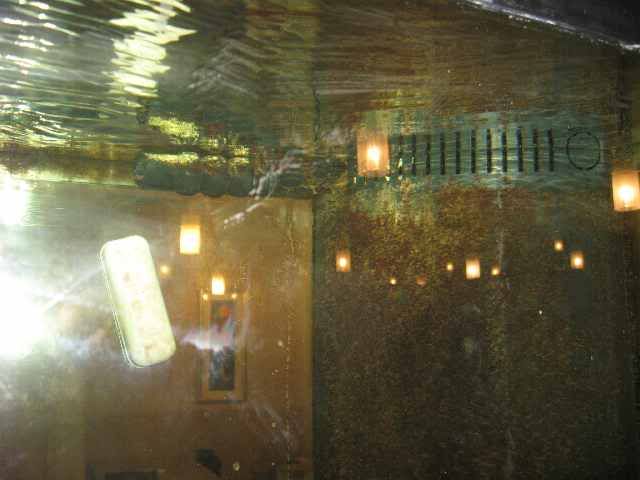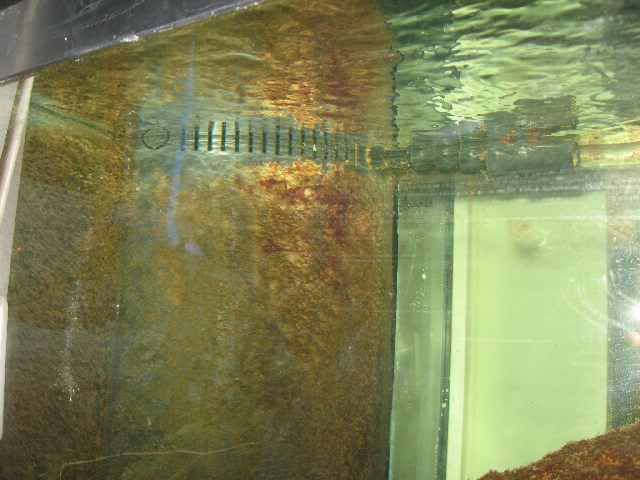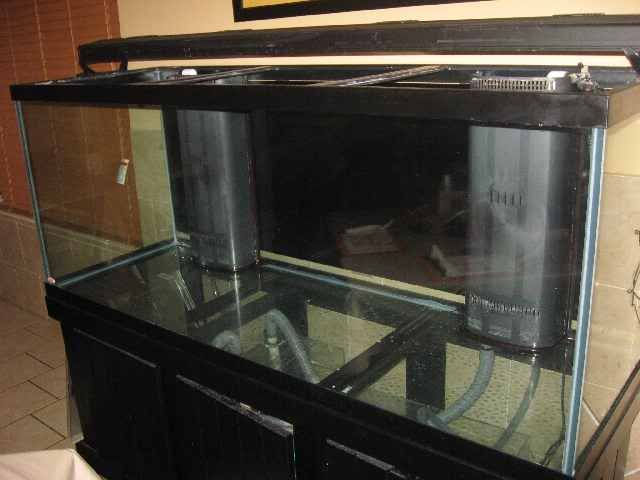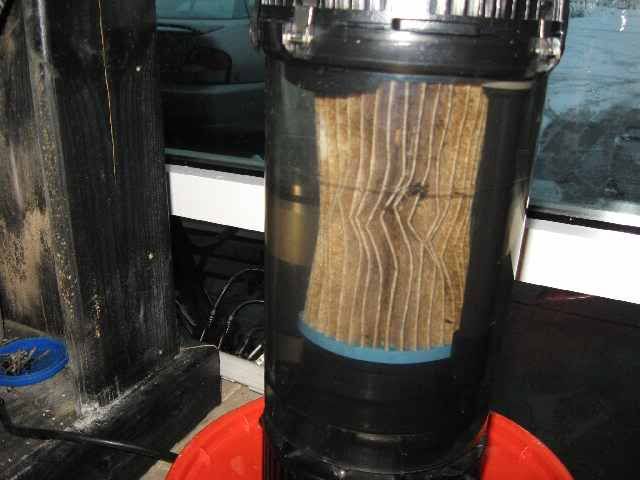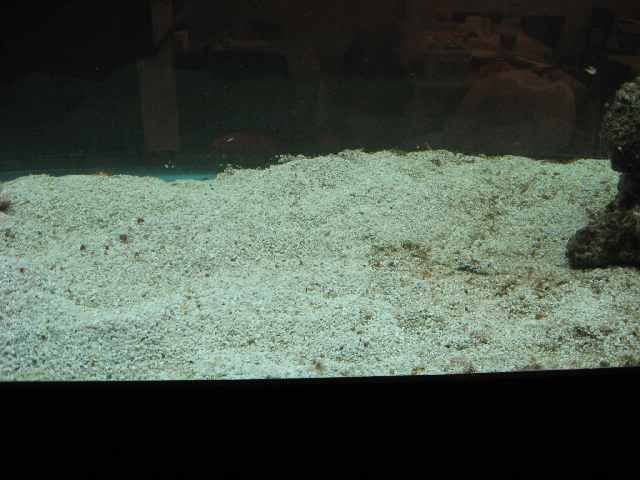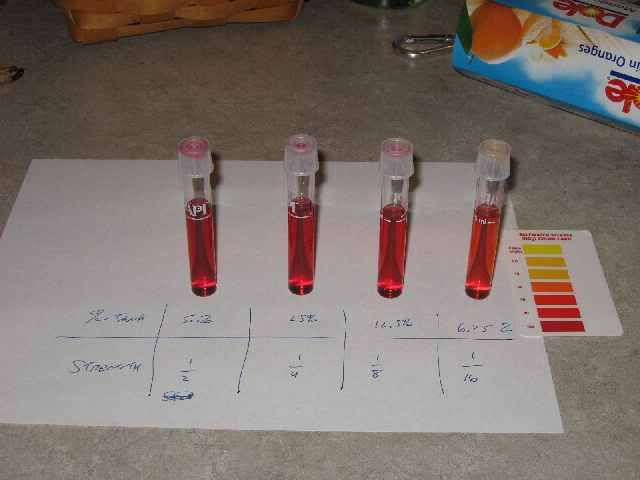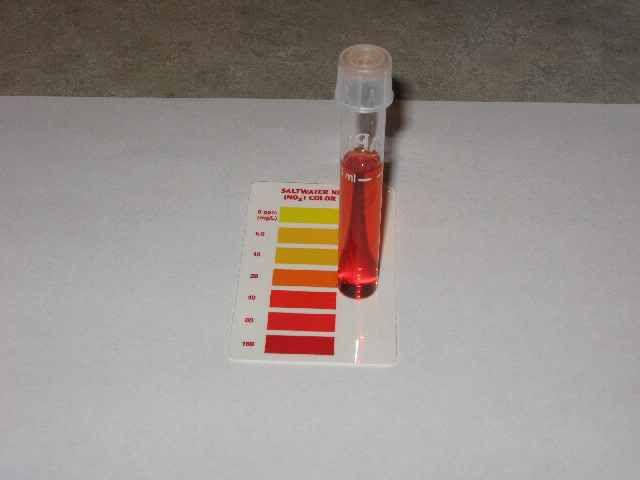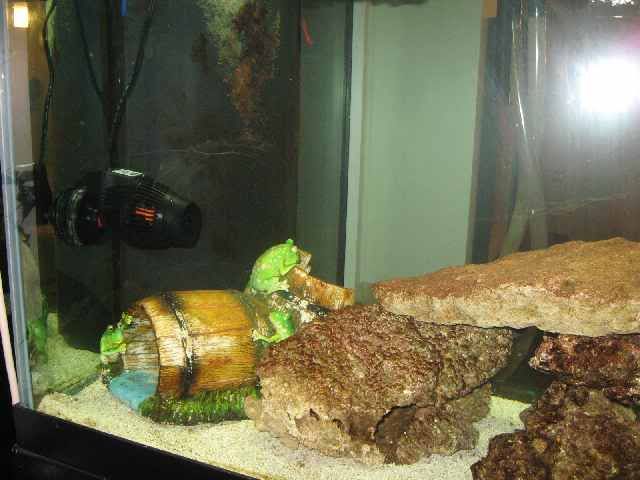Floyd R Turbo
RS Sponsor
I've started several threads on this and other forums with questions related to how to turn a customer's tank in a restaurant from an environment in which, IMHO, the fish are barely surviving, into one where they are happy and thriving.
So, I decided to merge these various threads...
http://www.reefsanctuary.com/forums/reef-chemistry-forum/53269-need-raise-ph-how-fast-safe.html
Need to raise pH, how fast is safe? - Reef Central Online Community
Which protein skimmer to go with? - Reef Central Online Community
Need to raise pH, how fast is safe? - Aquarium Advice - Aquarium Forum Community
...into one thread for this system, which is a 135 glass with dual overflows and Oceanic 3 sump (30g) so with sump at max operating level it's got about 150g of system volume. It is inhabited by a Dog-faced Puffer, and 3 Sergeant Majors. There was a Yellow Tang but he died - I'll cover that one later.
I started maintenance on this tank on December 13, 2009. On November 29th, I took an initial set of pictures and did a full battery of test. These were the initial test results:
Ammonia 0
Nitrite 0
Nitrates, off the scale on both API and Salifert
pH 7.4-7.6
Alkalinity 3 to 4 dKH
Salinity 32 / SG 10.235
And this is what the tank looked like:
Full Tank shot

Cyano and waste attached to substrate, LR, and decor
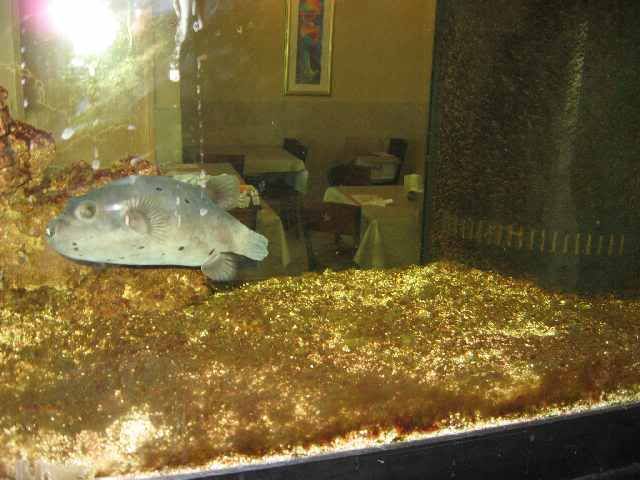

And the sump? Gag me...
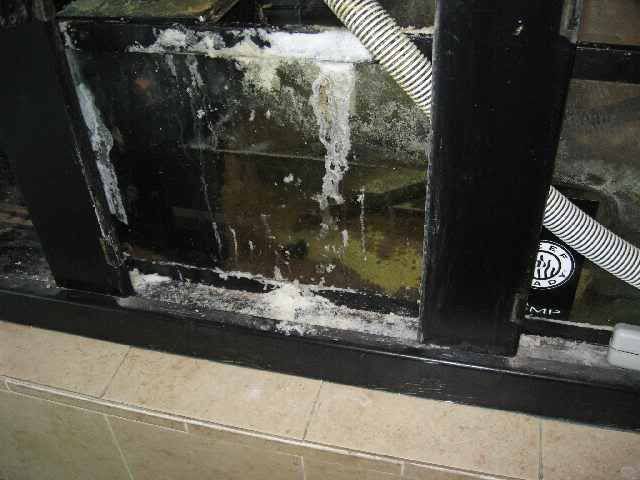
Salt creep like this all the way around
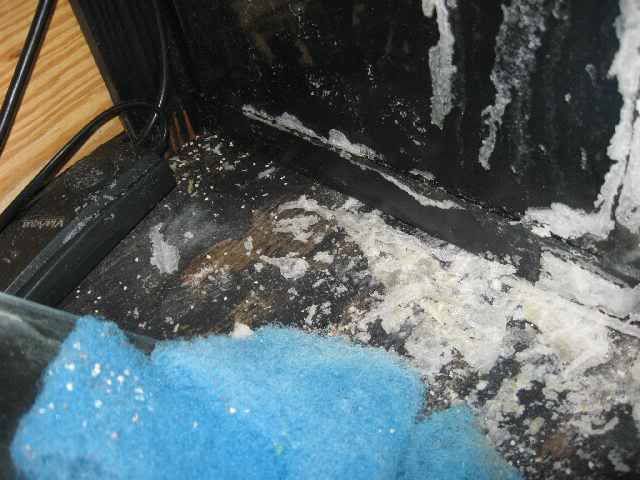
Left side at the outflow of the overflow inlet - you can't tell, but there are bio-balls in there
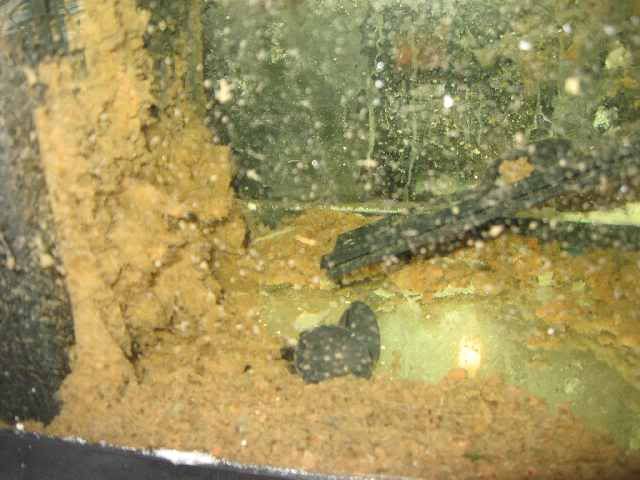
Sump, Right side

One of the biggest problems was that the water in the sump was flowing over the high barrier on the right. You can kind of see it in the first sump shot, there is supposed to be a sponge sandwiched between the low and high, and it looked like there was no sponge at all, just a bunch of sludge built up and it was completely blocked. Or at least, that's what it looked like. As I will show you in the next post, looks can be deceiving.
So, I decided to merge these various threads...
http://www.reefsanctuary.com/forums/reef-chemistry-forum/53269-need-raise-ph-how-fast-safe.html
Need to raise pH, how fast is safe? - Reef Central Online Community
Which protein skimmer to go with? - Reef Central Online Community
Need to raise pH, how fast is safe? - Aquarium Advice - Aquarium Forum Community
...into one thread for this system, which is a 135 glass with dual overflows and Oceanic 3 sump (30g) so with sump at max operating level it's got about 150g of system volume. It is inhabited by a Dog-faced Puffer, and 3 Sergeant Majors. There was a Yellow Tang but he died - I'll cover that one later.
I started maintenance on this tank on December 13, 2009. On November 29th, I took an initial set of pictures and did a full battery of test. These were the initial test results:
Ammonia 0
Nitrite 0
Nitrates, off the scale on both API and Salifert
pH 7.4-7.6
Alkalinity 3 to 4 dKH
Salinity 32 / SG 10.235
And this is what the tank looked like:
Full Tank shot

Cyano and waste attached to substrate, LR, and decor


And the sump? Gag me...

Salt creep like this all the way around

Left side at the outflow of the overflow inlet - you can't tell, but there are bio-balls in there

Sump, Right side

One of the biggest problems was that the water in the sump was flowing over the high barrier on the right. You can kind of see it in the first sump shot, there is supposed to be a sponge sandwiched between the low and high, and it looked like there was no sponge at all, just a bunch of sludge built up and it was completely blocked. Or at least, that's what it looked like. As I will show you in the next post, looks can be deceiving.

